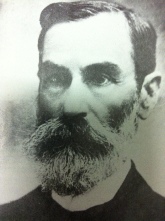Discussing the success of Buss in 1888, the Bundaberg Reporter said, 'he touches
nothing now scarcely but it turns to gold'. So when this man with such a keen eye
for business and opportunity decided to turn his attention to the glut of molasses
being pumped into the Burnett River, it marked the beginning of a legacy that would
endure to the present day.
In 1885, with molasses still being for the most part wasted, Buss was determined
to form a major distillery in Bundaberg which would turn the waste molasses into
a profitable enterprise. Buss invited those interested in the venture to a meeting
to be held at the rooms of Mr. Gadsen, located at the Custom House Hotel on
Saturday afternoon, 1 August 1885.
Unfortunately not enough interest was forthcoming at that time to proceed. Some of
the arguments against the establishment of a distillery were:
– The sugar planters had no desire to encourage their workmen in drinking habits
– It was morally wrong – Financially, was it needed?
– Doubts surrounding if there were would be enough molasses to make a distillery
viable
Turning molassess into spirits was not a new idea. Particularly in the early days
of the sugar industry, when sugar extraction practices saw nearly as much sugar ending
up in the molasses as was in the sugar crystals, little distilleries were commonly
run alongside sugar factories. In 1868, 13 distilleries operated throughout the colony.
The problem most small distilleries of the 1870's encountered was market saturation,
forcing many distilleries to close their doors. Most distilleries were short-lived
and uneconomic.
Enter the picture, Frederic Buss. Frederic Buss was well known throughout
the region of Bundaberg. Hardly a business enterprise went by without some interest
and/or input from the Buss family. Riding on the back of the Millaquin inspired “sugarpolitan”,
Buss and his associates set themselves up an empire of refineries and mills. From
1881 to 1918, the Buss family had interests in 11 properties, with many in the Bundaberg
district. Of the 16 sugar mills built from 1881 to 1885, which provided millaquin
with juice, Frederic Buss had interests in three. He also had a major interest in
the main department store of the time, Buss and Turner, located in Bourbong Street.

